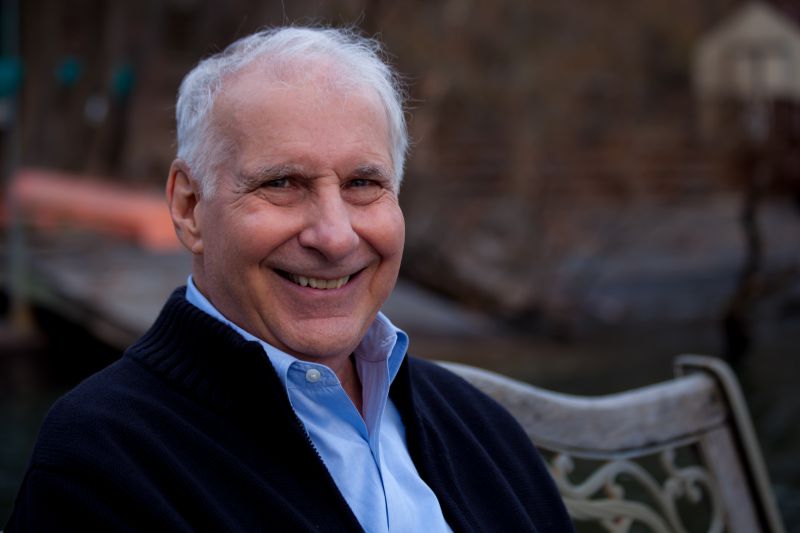Lessons from the Death of “Mental Patient” Esmin Green
- August 15, 2008
- / Dr. Peter Breggin
- / blogs,huffingtonpost

By Dr. Peter Breggin
08/15/2008
The Emergency Room video cam took it all in but no human response was forthcoming. Forty-nine year old Esmin Green had been involuntarily committed at the ER and then was left sitting on a bench for 24 hours before she toppled to the floor. She continued to be ignored by staff who saw her lying prostrate on the floor and was dead by the time a nurse checked her one hour later. The medical examiner reported that she died from thromboemboli—blood clots that traveled from her leg to her lung.
What can we learn from this dreadful event?
Esmin Green was involuntarily committed and was waiting for admission to a psychiatric unit. She was, in the eyes of the world and the ER staff, a “mental patient.” This is a status that no one should ever have. It’s a stigma that leads health professionals to lose interest in or to outright abuse the person.
She was almost certainly being administered antipsychotic or neuroleptic drugs, such as Haldol, Risperdal, Zyprexa, Seroquel or Geodon. The antipsychotic drugs vastly increase the death rate from almost all causes in people taking them. How would a class of psychiatric drugs cause an increase in the overall death rate?
First, there is the indifference that we have already noted—an indifference that overtakes professionals after they have made up their mind that someone is a mental patient, especially one so disturbed that the professionals believe she requires involuntary hospitalization and antipsychotic drugs. After that, it doesn’t matter what the person does—she can collapse onto the floor—and it is likely to be blamed on the individual’s “mental illness” and therefore be ignored.
Second, there is the indifference that the drugs induce in the individuals afflicted with them. Indeed, the main effect of the antipsychotic drugs has nothing whatsoever to do with ameliorating psychosis. The drugs, one and all, disrupt frontal lobe function causing a chemical lobotomy. The lobotomy-effect induces an apathy or indifference towards oneself that is so profound that individuals can be desperately ill without complaining about it. This failure to “complain” or even to ask for any help is the hallmark of these drugs that makes them useful in psychiatry. The drugged patients become docile and less troublesome. In Medication Madness (2008), I call this effect “medication spellbinding.”
Third, there are physical effects that contribute to a variety of disorders including clots that turn into lethal emboli. The antipsychotic drugs enforce a physical immobility very similar to Parkinsonism. Immobility leads to clot formation. The drugs also cause dehydration, another factor in potential clot formation. This is complicated by the fact that the dehydrated person is too medication spellbound to know that they need to drink water. These drugs also suppress cardiovascular and respiration function, cause hypotension (low blood pressure) and weaken heart muscle, additional risk factors for cardiovascular collapse. And these are only some of the ways in which antipsychotic drugs become lethal. Among many other potentially lethal drug effects, patients can die from a syndrome called unexplained sudden death as well as from acute drug-induced diabetes or pancreatitis and neuroleptic malignant syndrome (similar to a severe viral encephalitis of the brain).
When human beings are so emotionally disturbed that they cannot take care of themselves, what do they need? Let’s start with what they do not need. They do not need what modern biological psychiatry has to offer—involuntary incarceration and intoxication with potentially lethal mind-blunting drugs. Long ago when working as a college volunteer in state mental hospitals (1954-1958), I learned that desperately frightened, helpless human beings above all else need the caring presence of other human beings. Even as college volunteers we were able to help chronically hospitalized patients (the hospital had given up on them) by providing them a weekly supportive visit. In the great majority of instances, we were able to help these patients leave the hospital! As a psychiatrist, this principle has been confirmed again and again in my practice and in research: disturbed, distressed human beings need other human beings, both volunteers and professionals, to provide them supportive relationships and guidance, along with attention to their basic needs such as food and housing.
Modern psychiatry makes up biochemical theories to justify drugging patients with toxic drugs. Society needs to take the power away from the perpetrators of psychiatric abuse and instead spend the time, energy and money needed to provide meaningful human services to disturbed and helpless individuals.
In the meanwhile, we need to acknowledge that involuntary treatment is not “treatment” but imprisonment. Because it lacks the elaborate civil liberties protections afforded to imprisoned criminals, patients who are locked up are subjected to arbitrary power and abuse. Nor is society protected by locking up these helpless souls, few of whom ever perpetrate violence. No psychiatric drug has ever been shown to prevent violence or suicide. Instead, as I illustrate with dozens of dramatic cases in Medication Madness, psychiatric drugs promote suicide and violence.
Profoundly disturbed and emotionally disabled people need human services, not imprisonment, neglect, or toxic drugs. Esmin Green’s death is not so much an exception as it is the rule. The rule is that people labeled “mentally ill” and treated with psychiatric medications often endure far more harm than good. Many lives are ruined and many others lost as a result of involuntary “treatment” and psychiatric drugs.
Originally published on The Huffington Post.
 Psychiatric Reform Accomplishments
Psychiatric Reform Accomplishments